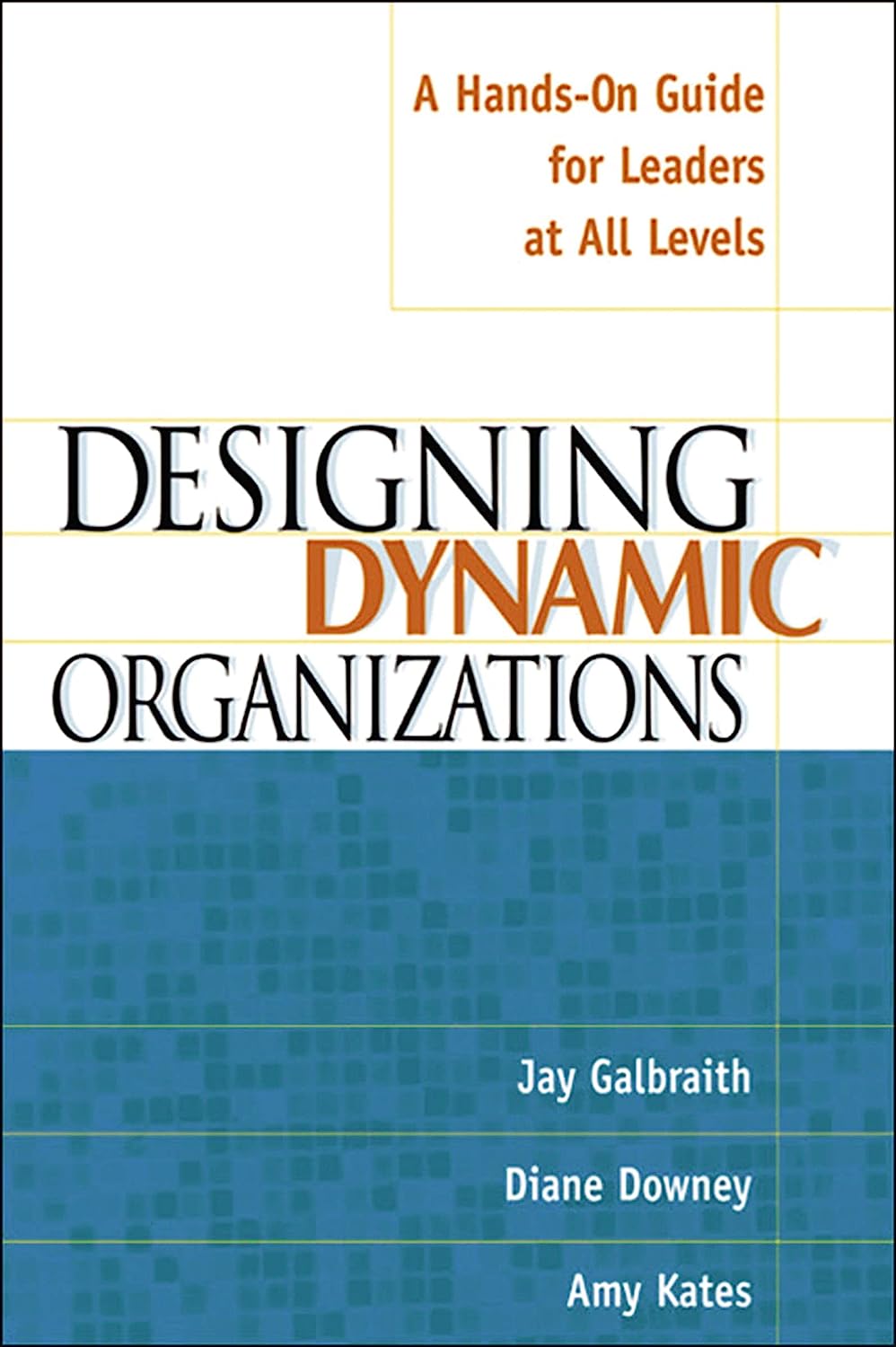Designing Dynamic Organizations

I never got to meet Jay Galbraith. His first work was published just months after my birth. However, Galbraith’s perspectives on organizations and change have reverberated over the years, and I finally got a chance to read some of his later work – Designing Dynamic Organizations. Galbraith published many works over the years, nearly all about creating structures for organizations that would perform and adapt.
The Model
The primary contribution to the literature was the introduction of a five-part “star” model:

In Designing Dynamic Organizations, Galbraith and his co-authors walk through steps designed to create clarity around each of these components of the model. The model starts with a strategy – and then the other four components of the model, which have no specific order, have an interconnected nature that means they’re likely to be worked simultaneously.
Strategy
The starting point for an organization and for a change effort is to develop the strategy. What is it that you believe will work to propel the organization forward? Often, approaches like SWOT and PESTLE are used to do this current state analysis. (See our SWOT and PESTLE resource book for more on how to do this current state analysis.)
In Galbraith’s perspective, the other part is about clarifying limits and assumptions. This is the same process that Immunity to Change seeks to unlock. By clarifying what is in the way of changes and success you’re better able to define a strategy that will work.
Structure
An organization has a set of resources to deploy, and structure is the question about how to best deploy them. Over the years, many have tried to define a single structure that is best for every organization. Edith Penrose outlined a complete approach in The Theory of the Growth of the Firm. Contemporary theorists, like Frederic LaLoux in Reinventing Organizations, challenge even the concept of structure as Galbraith considers it in his model. Gareth Morgan exposes multiple ways of looking at the structure problem in Images of Organization by examining different ways of thinking of organizations. The Heretic’s Guide to Management questions whether the structure is as meaningful as everyone assumes.
Ultimately, structure starts with the dimension across which you’ll primarily organize. Are you organizing sales by geography or by product lines? Historically, we saw many geographical organizations, but with better travel and virtual options for meetings, there’s a shift towards more product focused organizations.
Processes and Lateral Capability
Here, Galbraith is focused on how the organization works around the structure that’s put in place. Some of it is the way that teams are formed. Richard Hackman and Greg Oldham wrote Work Redesign to directly address the gyrations necessary to create more effective processes. (See also Collaborative Intelligence for more on Hackman’s thoughts about effective teams.) More than that, Galbraith is talking about fostering communities in the organization. (See Digital Habitats for examples.) Organizations aren’t made up of the official structure alone. Instead, they’re the network of connections that are started by the structure and enhanced by the internal spirit of collaboration and working spaces.
Reward Systems
Recognizing people appropriately is a complex struggle for every organization. It starts with the challenge of intrinsic motivation and the real possibility of explicit rewards disrupting that motivation. (See Why We Do What We Do for more.) Motivating employees is more than just money. (See 365 Ways to Motivate and Reward Your Employees with Little or No Money.) Influencing others – building reward systems to systemically influence them – has a good deal of research, since it’s such a challenging and important task for organizations. For instance, The Titleless Leader, Influence, Pre-Suasion, Influence Without Authority, and 42 Rules of Employee Engagement all provide clues to reward approaches that are effective.
However, the question about who you should reward is often overlooked. The unfortunate reality is that most organizations don’t know what metrics would be appropriate their employees – and what values the metrics should have to indicate the need for recognition and reward. (See our Metrics & Indicators resource book for more on setting the right metrics and targets.)
People
Organizations move forward because of the people they attract, screen, motivate, and retain. These processes aren’t necessarily easy, but there are things that you can do to improve the people in the organization – and therefore what you’re capable of.
Greater attention is being paid to brand awareness – not just from the customer perspective but also because it impacts the degree to which people will want to work with an organization. Building a strong brand is a cornerstone of attracting the right talent.
Screening the applicants is a process. It’s a system that starts with a pool of applicants and ends with hiring one or more of those people for the available roles. (See Who for more on this process.) One of the key capabilities of people in today’s world is their ability and desire to learn, because it’s almost impossible to identify all the skills that an employee will need to be successful in today’s rapidly changing world. (See The Adult Learner for more.)
Once they’re on board, it’s important to provide effective feedback for the employee. (See Radical Candor for an integrated approach to feedback.)
Together
Collectively, Galbraith explains that these components can make – or break – an organization. With his guidance, he believes that you can be good at Designing Dynamic Organizations.
